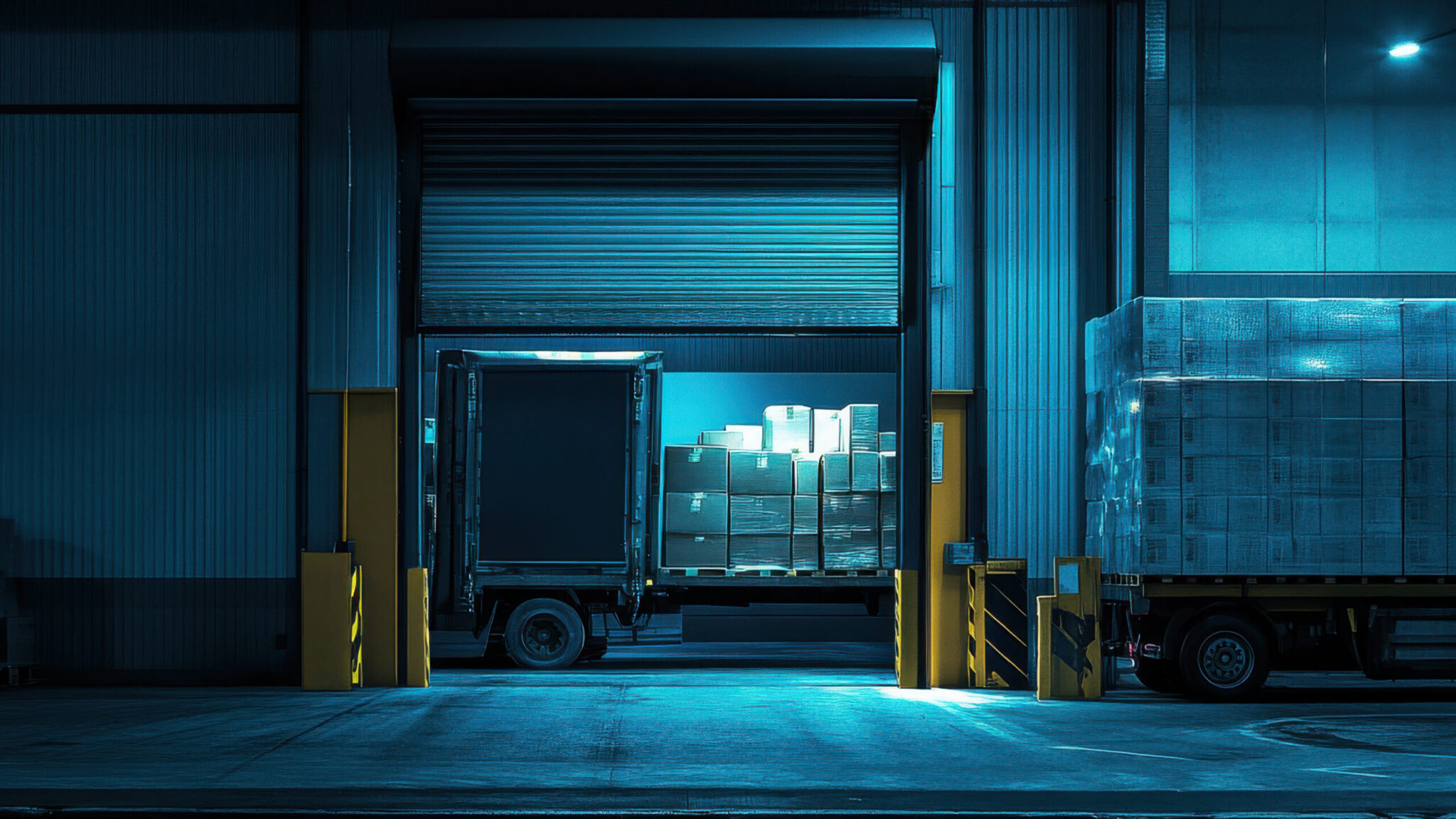The 10 most important benefits of ERP systems – helping every company and every department take the next step. Learn more now!

Summary:
Efficient warehouse receiving is key to smooth warehouse and production operations. Delays, incorrect labeling, or incomplete deliveries can disrupt the entire supply chain and drive up costs. To avoid this, companies should focus on digitizing and structuring their warehouse receiving process – reducing effort while gaining greater control. The goal: minimize common issues such as incomplete shipments or inaccurate documentation.
Warehouse receiving is the link between supplier and warehouse – and the very first step in the internal material flow. Incoming goods are received, checked, and prepared for storage. Simple in theory, yet in practice full of challenges: incomplete shipments, missing documents, or incorrect item numbers are all too common.
Typical tasks in warehouse receiving include:
A well-structured warehouse receiving process ensures that all subsequent warehouse and production operations run smoothly. After all, errors at this stage often ripple through the entire workflow.
A well-organized warehouse receiving process doesn’t just start when goods arrive at the dock – and it doesn’t end with the first scan in the warehouse. The entire workflow consists of several interconnected steps that need to run seamlessly. Only then can companies prevent faulty goods from moving further along the line or incomplete shipments from being stored by mistake.
The shipment is received, documented, and first checked for visible damage. If there are obvious defects – such as damaged packaging or improper temperature control – the delivery may be refused. At this stage, many companies also compare the goods with the advance shipping notice, provided it is available digitally.
Next comes the check for completeness, item numbers, batches, quantities, and, where required, quality – depending on the industry and inspection process. Any defects or discrepancies are documented, sometimes supported by photos, and usually lead to coordination with purchasing or the initiation of a blocking process.
If the delivered items are correct, the transaction is recorded in the ERP or WMS. This entry is the basis for internal processing – from storage to production release.
The goods are assigned to a storage location – either automatically or manually. This may include different areas such as high-bay storage, shelving systems, or a quarantine warehouse.
The final step: physically placing the goods in storage as specified, with confirmation back into the system. In modern warehouse processes, this is usually done with mobile devices or scanners – resulting in less paperwork, fewer errors, and faster workflows.
Paper forms, manual entries, and lack of transparency – in many companies, warehouse receiving still relies on processes that are unnecessarily error-prone and time-consuming. The consequences may not show immediately, but they add up quickly: more queries, delays, and significant downstream costs.
Typical risks of non-digitalized warehouse receiving:
Analog warehouse receiving is therefore not just a matter of efficiency – it carries real risks for quality, delivery capability, and cost control. In contrast, optimized warehouse receiving processes, supported by proven methods and technologies, provide the transparency needed, eliminate sources of error, and lay the foundation for reliable, streamlined warehouse operations.
The 5S method comes from Lean Management and pursues a clear objective: standardize work areas, eliminate waste, and improve processes through order and structure. Especially in warehouse receiving – where deliveries must be processed quickly, accurately, and with full traceability – 5S can be a powerful lever.
The five S stand for:
Only the items truly needed remain at the workstation. Inspection tools, scanners, and delivery notes are kept within easy reach.
Every item has a defined place – for example, a shelf with clearly labeled compartments for delivery notes, return labels, and inspection instructions.
Regular cleaning as a measure for quality and safety. This includes daily checks of equipment and the warehouse receiving area.
Processes and inspection procedures are documented in a uniform way – and consistently followed by all employees.
Following the established standards becomes second nature. This could include, for example, a daily start-of-shift check.
Colors, symbols, and visual markers make warehouse receiving processes more intuitive and transparent – a real advantage, especially when staff changes frequently.
The right warehouse equipment makes receiving easier and improves the use of space and time – particularly in high-frequency areas.
An ERP system links all process steps – from purchase order through warehouse receiving to inventory management – in one continuous digital workflow.
Mobile devices make it possible to record incoming goods directly upon arrival – without paper and with minimal effort.
With RFID, goods can be identified automatically – even when packed or stacked. The technology is particularly useful for large volumes or standardized packaging.
OCR scanners recognize printed or scanned text and convert it into digital data – ideal for automated delivery note handling.
An electronic advance shipping notice informs the warehouse about deliveries before the truck even arrives.
Not every warehouse receiving process needs to be fully automated – but without clear workflows, structured processes, and the right technologies, a great deal of potential remains untapped. With this short self-check, you can see at a glance where your company stands – and where it pays to look more closely.
Do the following statements apply to your warehouse receiving?
The more statements you can confidently answer with “yes,” the more structured and digitalized your warehouse receiving process already is.
In the chemical industry, warehouse receiving is more than logistics: it must also ensure traceability, hazardous substance management, and compliance with regulatory requirements. A digitally supported process delivers both efficiency and compliance.
Right at the loading dock, the delivery note is scanned or photographed via a mobile app. An integrated OCR solution automatically captures all key information such as item numbers, quantities, batches, and supplier data. The ERP system instantly matches the data with the purchase order – including GHS labeling and storage conditions for hazardous substances. Any discrepancies, such as incorrect quantities or missing labels, are immediately flagged.
Posting is carried out on mobile devices and based on role-specific authorizations. Authorized employees assign the delivery directly to an appropriate storage location – for example, a hazardous substance warehouse with restricted access or temperature control. For substances requiring inspection, the quality assurance process starts automatically. Goods remain blocked until released. Photos, inspection reports, and documents are captured digitally and stored centrally in the DMS.
The result: a secure, paperless warehouse receiving process with end-to-end batch traceability – compliant, efficient, and ready for further processing.
A structured, digital warehouse receiving process only runs smoothly when information, systems, and all process participants work seamlessly together. This is exactly where Yaveon ERP comes in – with a solution specifically enhanced for the requirements of the process industry and built on Microsoft Dynamics 365 Business Central.
Real-time purchase order matching
Warehouse receiving can be linked directly to existing purchase documents – automatically, reliably, and with full traceability.
Real-time posting & inventory updates
As soon as goods are scanned, inventory levels are updated in the system – with no delays and no duplicate entries.
Integrated batch and serial number capture
Perfect for regulated industries: traceability is built into the process by default.
Mobile device integration
Barcode scanners, tablets, or handheld devices can be connected directly – ensuring maximum flexibility in warehouse receiving.
An optimized warehouse receiving process is more than just a gain in efficiency – it delivers structure, reliability, and a solid foundation for stable operations in warehousing, production, and purchasing.
Companies that rely on seamless processes, digital technologies, and an integrated ERP system reduce sources of error, increase transparency – and turn warehouse receiving into a genuine competitive advantage.
The 10 most important benefits of ERP systems – helping every company and every department take the next step. Learn more now!
 Additional possibilities through erp integrations – Beitrag öffnen
Additional possibilities through erp integrations – Beitrag öffnen
We show you the most important opportunities offered by erp integrations and reveal what you should definitely look out for.
 8 ERP trends for 2025: ERP in transition – Beitrag öffnen
8 ERP trends for 2025: ERP in transition – Beitrag öffnen
Discover the ERP trends 2025: artificial intelligence, cloud and more - for the future of your company.